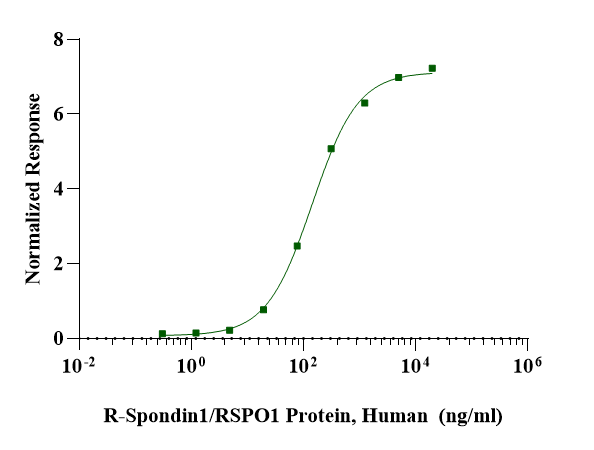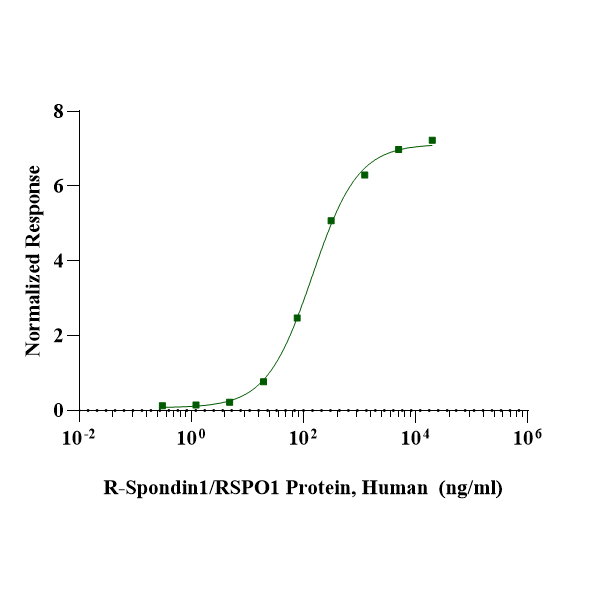Measured by its ability to induce Topflash reporter activity in HEK293T human embryonic kidney cells. The ED50 for this effect is typically 110-190 ng/mL in the presence of 5 ng/mL recombinant mouse Wnt3a.
Product Details
Product Details
Product Specification
| Species | Human |
| Synonyms | R-spondin-1; Roof plate-specific spondin-1 (hRspo1); |
| Accession | Q2MKA7 |
| Amino Acid Sequence | Ser21-Ala263 |
| Expression System | CHO |
| Molecular Weight | 27 kDa (Reducing) |
| Purity | >95% by SDS-PAGE. |
| Endotoxin | <0.1EU/μg |
| Conjugation | Unconjugated |
| Tag | No Tag |
| Physical Appearance | Lyophilized Powder |
| Storage Buffer | PBS, PH7.4 |
| Reconstitution | Reconstitute at 0.1-1 mg/ml according to the size in ultrapure water after rapid centrifugation. |
| Stability & Storage |
· 12 months from date of receipt, lyophilized powder stored at -20 to -80℃. · 3 months, -20 to -80℃ under sterile conditions after reconstitution. · 1 week, 2 to 8℃ under sterile conditions after reconstitution. · Please avoid repeated freeze-thaw cycles. |
| Reference | Nature. 2011 Jul 4;476(7360):293-7. |
Background
R-spondin 1 (RSPO1) is a secreted protein that belongs to the R-spondin family, which consists of four structurally related proteins (RSPO1-4) that act as ligands for the Wnt signaling pathway. RSPO1 plays a crucial role in regulating Wnt/β-catenin signaling by binding to the LGR4-6 receptors and enhancing the activity of Wnt ligands. This interaction leads to the stabilization of β-catenin and the activation of Wnt target genes involved in cell proliferation, differentiation, and stem cell maintenance. RSPO1 has been implicated in various developmental processes, including embryogenesis, tissue regeneration, and stem cell self-renewal. Dysregulation of RSPO1 signaling has been associated with several diseases, such as cancer and developmental disorders.
Picture
Picture
Bioactivity

SDS-PAGE
2μg (R: reducing condition, N: non-reducing condition).


